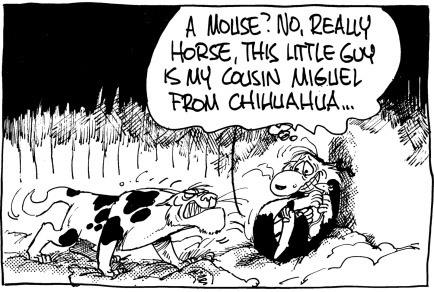Here are two sentences:
Luton Town nearly won.
Luton Town were on the verge of what would’ve been a giant-killing act.
In terms of the meaning, the two seem to be the same. Yet there is some fundamental difference between them. The first sentence is merely describing the action, a factual statement, while the second is adding something of our opinion of the event. The second sentence comes from a Guardian newspaper sports report. The sports “report” is a bit of a misnomer really as we generally already know the result. It actually functions to evaluate various aspects of the the game: Was it exciting? Did the better team win? How were the players? As such, it uses a lot of language to provide the writer’s opinion. According to Martin & White, we can call this the ‘language of evaluation’, or appraisal.
Appraisal can be looked at from three perspectives. The first of these is what is termed ENGAGEMENT. As I said above, we can make a fundamental distinction in language between facts and opinion. We present some piece of information as either an agreed-upon fact of the world, a monogloss, or open to interpretation from different points of view, a heterogloss. Martin & White give the example of the difference between the following:
Francis Bacon was the author of The Tempest. (monogloss)
They say Francis Bacon was the author of The Tempest. (heterogloss)
It is important to remember that a monogloss is not necessarily true but is being presented as such while heterogloss can be used to cast doubts upon something, for example President Trump’s comments on global warming casting doubt on the scientific consensus (“But I don’t know that it’s man-made”) while presenting an alternate hypothesis as fact (“Something’s changing and it’ll change back again”).
The second perspective is our ATTITUDE towards something, which itself can be expressed in two ways. Firstly, we can give an emotional response to something, in what can be termed AFFECT. This can be done in one of three ways: Mental Processes (e.g. I love Liverpool FC), nouns (e.g. My passion is for Liverpoool FC) or adjectives (e.g. Liverpool FC is great!). Secondly we can make a distinction between human or non-human participants. For human entities, we can pass JUDGEMENT in terms of positive or negative behaviors or attributes, while for non-human entities we can pass APPRECIATION. For example, this headline has an example of both:
- He is proof god exists (JUDGEMENT)
- Messi Fans Respond…After Ridiculous Freekick Goal (APPRECIATION)
The third perspective of Appraisal is GRADATION, whereby we can make our opinions toward something stronger or softer through FORCE and sharper or softer through FOCUS. For example, in sports reporting we might want to compare a team that wins 6-0 easily against one that struggles to win 1-0, as in an opinion piece in the Guardian newspaper that talks about “thumping wins” (FORCE:raise) and “not so pretty ones” (FORCE:lower). Additionally, we might want to consider something in terms of how it conforms to our notions of class membership, for example the same Guardian opinion piece characterizes Eddie McGuire’s apology as a “qualified apology ” (FOCUS:soft) and the “acute embarrassment” (FOCUS:sharpen) his comments brought to the AFL.
The system of Appraisal can thus be represented as:

This is not to say that it is one or the other, as there is often overlap between them and one item can simultaneously function in different ways. For example the phrase ” a giant-killing act” could be analysed as:
- ATTITUDE: positive appreciation
- GRADATION: raised force
As ever, please look here for a clearer explanation!
References:
J. R. Martin and P. R. R. White (2005) The Language of Evaluation: Appraisal in English. Palgrave, London.


